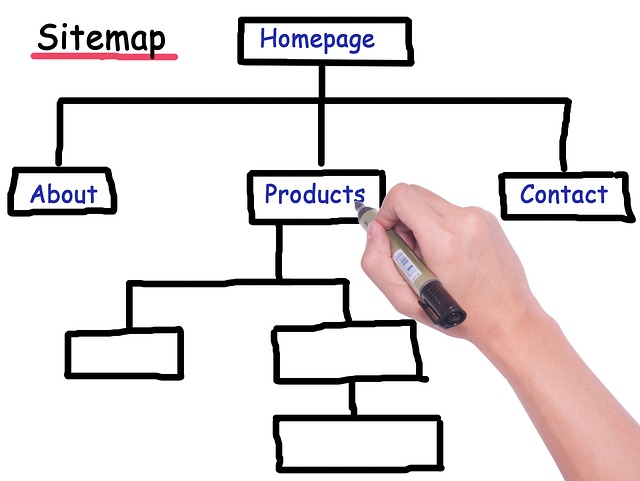A strategic website redesign is crucial for businesses to thrive in today's digital era. It goes beyond aesthetics, focusing on enhancing user experience (UX), boosting conversions, and improving search engine rankings (SEO). Key steps include defining goals, evaluating performance, prioritizing mobile optimization, integrating features, implementing UX design principles, aligning branding, optimizing content, thorough testing, and a well-planned launch strategy. Regular KPI tracking post-launch ensures continuous improvement. Ultimately, a successful website redesign drives engagement, business success, and a strong online brand identity.
In today’s digital era, a professional website redesign is not just an option—it’s a necessity. With competitive markets and evolving user expectations, your online presence must be optimized for both search engines (SEO) and mobile users. This comprehensive guide navigates the process from understanding the need for a redesign to creating an engaging user experience, choosing the right branding, implementing essential functionality, and measuring post-redesign success. By the end, you’ll be equipped with the knowledge to transform your website into a powerful online asset.
Understanding the Need for a Website Redesign

In today’s digital era, a website is often an entreprise’s online face, acting as a crucial touchpoint for potential customers and clients. However, having an outdated or inefficient site can be detrimental to business growth. A Website Redesign isn’t just about changing aesthetics; it’s a strategic move to enhance user experience (UX), improve conversion rates, and stay ahead of the competition. Many businesses find themselves in need of a refresh due to evolving customer expectations, advancements in technology, or a desire to better align their online presence with their brand identity.
Whether it’s adapting to mobile-first design trends, integrating new features, or simply keeping up with the latest web standards, a professional Website Redesign can be a game changer. It offers an opportunity to streamline navigation, optimize content for search engines (SEO), and create a visually appealing interface that resonates with target audiences. By understanding your audience’s needs and goals, you can transform your website into a dynamic asset that drives engagement and fosters business success.
Setting Clear Goals and Defining Your Target Audience

Before diving into a website redesign, it’s crucial to set clear goals and define your target audience. This initial step acts as a compass, guiding your design decisions and ensuring your new website aligns with your business objectives. Start by identifying what you want to achieve—be it enhancing user experience, increasing conversions, or boosting brand recognition. Then, pinpoint who your ideal visitors are: their demographics, interests, pain points, and expectations. Understanding your audience allows for a more tailored design that resonates with them, making your website redesign not just an aesthetic change but a strategic one.
By setting specific goals and target audience definitions, you can create a redesigned website that’s not only visually appealing but also highly functional and relevant. This approach ensures your website becomes a powerful tool in achieving your business goals, whether it’s driving sales, fostering engagement, or building long-term relationships with your customers.
Evaluating Your Current Website's Performance

Evaluating your current website’s performance is a crucial step in any successful website redesign. In today’s digital era, users expect fast, mobile-friendly, and visually appealing websites that deliver content promptly. Your existing site might be lacking in one or all of these areas, making it inefficient in capturing and retaining user interest. By thoroughly analyzing key metrics such as page load times, bounce rates, conversion rates, and user engagement, you can pinpoint problem areas and opportunities for improvement.
This process involves understanding your target audience’s behavior on the site, identifying pain points they encounter, and gathering feedback to gain insights into their expectations from a renewed online presence. Such an evaluation ensures that your new design aligns with user needs, enhancing user experience (UX) and search engine optimization (SEO) performance, ultimately driving better results and establishing a strong online brand identity.
Creating an Engaging User Experience (UX) Design

A successful website redesign goes beyond aesthetics; it’s about crafting an engaging user experience (UX) that captivates and retains visitors. In today’s digital era, where folks navigate countless websites daily, a standout design is essential for any business. The goal is to create a seamless journey, guiding users towards their desired goals while enjoying the process. Achieving this involves understanding your target audience, streamlining navigation, and leveraging visual elements effectively to enhance user interaction.
Effective UX design ensures that the website’s structure and layout are intuitive, allowing visitors to find information or services promptly. Interactive features, well-placed calls-to-action, and a responsive design that adapts to various devices further contribute to a positive experience. Remember, a professional website redesign should not only transform the visual appeal but also optimize the user journey, ultimately driving engagement and conversions.
Choosing the Right Visual Identity and Branding

When redesigning a professional website, selecting the appropriate visual identity and branding is a pivotal step. It’s not just about aesthetics; it’s about conveying your brand’s essence and connecting with your target audience. A cohesive design language, including color palettes, typography, and imagery, should align with your business values and differentiate you from competitors. Consider your brand’s personality and the message you want to communicate through visual elements. This consistency enhances user experience and builds trust.
For a successful website redesign, conduct thorough research to understand your target market and industry trends. Analyze competitors’ branding strategies to identify unique selling points. Incorporate these insights into your visual identity to create a distinctive online presence. Remember that the right branding can transform your website from merely informative to captivating and memorable, ultimately driving user engagement and boosting conversions in the context of a Website Redesign.
Implementing Essential Functionality and Features

When redesigning a professional website, implementing essential functionality and features is paramount to creating a robust online presence. This involves incorporating user-friendly navigation menus, intuitive search capabilities, and responsive design that adapts seamlessly across various devices. A well-designed homepage should offer clear calls-to-action, allowing visitors to engage with your brand effortlessly.
Moreover, integrating key features such as content management systems (CMS), blog sections, and interactive elements enhances user experience. A CMS enables non-technical users to update content effortlessly, while a blog section provides an opportunity to share industry insights, thereby improving search engine optimization (SEO). Interactive elements like quizzes or surveys can capture visitor interest and foster engagement, ultimately driving conversions.
Optimizing for Search Engines (SEO) and Mobile Users

When undertaking a website redesign, optimizing for both search engines and mobile users is paramount. With most internet traffic now originating from mobile devices, ensuring your site is fully responsive and optimized for smaller screens is crucial. This includes fast loading times, easy navigation, and a visually appealing layout that adapts seamlessly to different screen sizes.
Search Engine Optimization (SEO) strategies should also be integrated into the redesign process. Keyword research and strategic content placement can significantly improve search engine rankings. Additionally, implementing structured data markup, optimizing meta titles and descriptions, and building quality backlinks will enhance your site’s visibility in search results, making it more discoverable to both desktop and mobile users alike.
Content Strategy: What to Keep, Update, and Remove

When embarking on a website redesign, content strategy is a cornerstone that guides the process. The first step is to critically assess what content from the old site should be kept, updated, or removed. Keeping relevant, high-quality content ensures that your audience finds value in your site even after the redesign. This includes core pages like About Us, Services, and Contact, which serve as the foundation of your online presence.
Updating content involves refreshing information that has become outdated or stale. This could be industry trends, service offerings, or team member profiles. Remove any content that is no longer relevant, such as old news articles or products no longer in stock. This not only keeps your site current but also enhances user experience by providing accurate and engaging content. Effective content management during a website redesign ensures that your online presence remains a robust and dynamic representation of your brand.
Testing, Launching, and Measuring Success Post-Redesign

After a comprehensive redesign, testing is crucial to ensure the new website performs as expected across various devices and browsers. This involves rigorous quality assurance checks to identify and fix any bugs or usability issues before launch. User acceptance testing (UAT) is also vital, gathering feedback from target audiences to validate design choices and functionality. Once the site is deemed ready, a well-planned launch strategy is essential for minimal disruption to users. This includes setting a specific launch date, communicating changes in advance, and coordinating with relevant teams for final preparations.
Post-launch, measuring success requires tracking key performance indicators (KPIs) such as website traffic, bounce rates, conversion rates, and user engagement metrics. Analytics tools provide valuable insights into how users interact with the new site, highlighting areas that need improvement or optimization. Regular analysis of these data points allows for informed decisions, enabling continuous enhancement and ensuring the Website Redesign achieves its intended goals.
